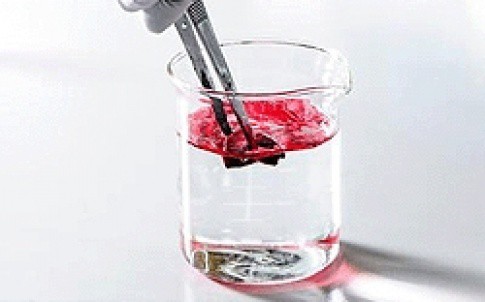If further developed, the technology may offer a cheaper and ‘greener’ method to absorb oil and heavy metals from water and other surfaces.
Shaoqin ‘Sarah’ Gong, a researcher at the Wisconsin Institute for Discovery (WID) and associate professor of biomedical engineering, graduate student Qifeng Zheng, and Zhiyong Cai, a project leader at the USDA Forest Products Laboratory in Madison, have recently created and patented the new aerogel technology.

Aerogels, which are light and highly porous materials, are already used in a variety of applications ranging from insulation and aerospace materials to thickening agents in paints.
The aerogel prepared in Gong’s lab is made of cellulose nanofibrils (sustainable wood-based materials) and an environmentally friendly polymer. Furthermore, these cellulose-based aerogels are made using a freeze-drying process without the use of organic solvents.
‘For this material, one unique property is that it has superior absorbing ability for organic solvents - up to nearly 100 times its own weight,’ Gong said in a statement. ‘It also has strong absorbing ability for metal ions.’
Treating the cellulose-based aerogel with specific types of silane after it is made through the freeze-drying process is a key step that gives the aerogel its water-repelling and oil-absorbing properties.
‘So if you had an oil spill, for example, the idea is you could throw this aerogel sheet in the water and it would start to absorb the oil very quickly and efficiently,’ she said. ‘Once it’s fully saturated, you can take it out and squeeze out all the oil. Although its absorbing capacity reduces after each use, it can be reused for a couple of cycles.’
In addition, this cellulose-based aerogel is said to exhibit excellent flexibility as demonstrated by compression mechanical testing.
Though much work needs to be done before the aerogel can be mass-produced, Gong said she’s eager to share the technology’s potential benefits beyond the scientific community.
‘We are living in a time where pollution is a serious problem - especially for human health and for animals in the ocean,’ she said. ‘We are passionate to develop technology to make a positive societal impact.’




Swiss geoengineering start-up targets methane removal
Several rather dubious statistics in this report. IF methane had 120× the thermal effect of CO2 that would be TWO orders of magnitude. Two is not...